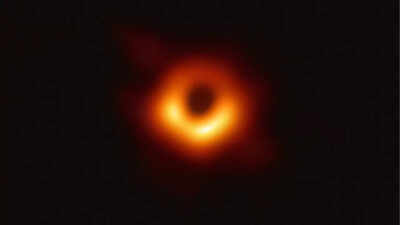- News
- Science News
- NASA just discovered the ‘Door to Hell’ that has 2.6 billion times the mass of the sun, scientists are shocked
NASA just discovered the ‘Door to Hell’ that has 2.6 billion times the mass of the sun, scientists are shocked
NASA has discovered a supermassive black hole at the center of galaxy M87, 52 million light-years away from Earth. Estimated to be 2.6 billion times the mass of the Sun, this intriguing black hole is surrounded by a high density of stars and emits powerful jets of plasma and X-ray emissions.
NASA has made a new groundbreaking discovery that has caught the attention of scientists and space enthusiasts alike. A massive black hole, located in a nearby galaxy, is being called the "Door to Hell" by researchers. This black hole is unlike anything that has been seen before, and its unusual characteristics are raising many questions about the mysteries of the universe. While experts continue to study it, they believe this discovery could offer new information into the nature of black holes and how they affect the galaxies around them. More details about this mind blowing cosmic phenomenon are expected to emerge soon.
‘Door to Hell’ black hole found at center of galaxy M87 is 52 million light years away from the Earth
NASA has announced a major discovery that is of a supermassive black hole located at the heart of the galaxy M87. It is estimated to be 2.6 billion times the mass of the Sun, making it one of the most massive black holes ever known. The discovery was made possible by new images taken by NASA’s Hubble Space Telescope. The black hole’s intense gravity is so powerful that it distorts space and time around it. This galaxy, located 52 million light-years away from Earth, contains over 100 billion stars, yet its center holds a mysterious force that fascinates and frightens scientists. While the existence of the black hole was doubted for years, it wasn’t until recent Hubble images, analyzed by astronomers Tod Lauer, Sandra Faber, and Gary Linds, that it was fully confirmed.
What makes the black hole in galaxy M87 so fascinating
Also Read: Frog species once thought lost for 130 years rediscovered in Chile’s untouched ecosystems

About the Author
TOI Science DeskEnd of Article
FOLLOW US ON SOCIAL MEDIA

